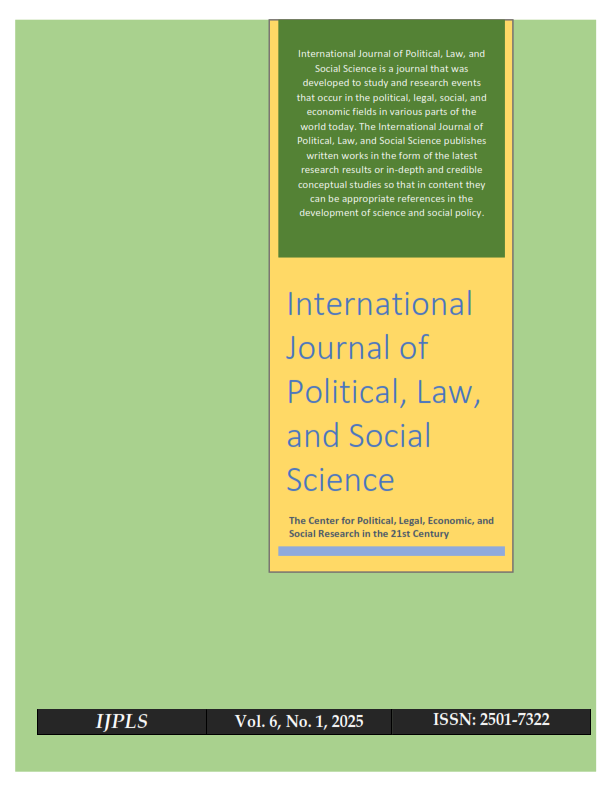ECONOMIC LANDSCAPE OF ITALY: STRUCTURAL CHALLENGES, GROWTH PROSPECTS, AND POLICY DIRECTIONS
Keywords:
Economic Conditions, Italy, Labor Market, Public Debt, Regional DisparitiesAbstract
Italy, as the third-largest economy in the Eurozone, presents a complex economic profile shaped by historical legacies, industrial structures, and socio-political dynamics. This study examines the current economic conditions of Italy by analyzing key indicators such as GDP growth, unemployment, public debt, regional disparities, and industrial competitiveness. Secondary data from Eurostat, the World Bank, and OECD reports were utilized to provide a comprehensive overview. Findings reveal that while Italy remains strong in sectors such as manufacturing, tourism, and luxury goods, it continues to face persistent challenges including high youth unemployment, slow productivity growth, and one of the highest public debt ratios in Europe. Regional imbalances between the prosperous northern regions and the less developed south exacerbate socio-economic inequalities. Furthermore, the COVID-19 pandemic has significantly impacted economic resilience, necessitating structural reforms. The analysis highlights the importance of digital transformation, green economy initiatives, and labor market reforms as crucial pathways for sustainable growth. Ultimately, Italy’s economic future will depend on its ability to balance fiscal stability with inclusive development strategies.
References
Amighini, A., & Rabellotti, R. (2020). Italy’s industrial districts in the global economy. Cambridge Journal of Economics, 44(2), 377–401. https://doi.org/10.1093/cje/bez056
Bank of Italy. (2022). Annual report 2021. Rome: Banca d’Italia.
Barba Navaretti, G., & Castellani, D. (2020). Productivity and firm dynamics in Italy. Journal of Productivity Analysis, 53(1), 57–75. https://doi.org/10.1007/s11123-019-00573-8
Bassanini, A., & Scarpetta, S. (2019). Labor market reforms in Italy: Lessons and perspectives. OECD Economic Studies, 68(1), 45–72.
Bianchi, P., & Labory, S. (2021). Industrial policy in Italy and Europe. European Planning Studies, 29(10), 1829–1848. https://doi.org/10.1080/09654313.2020.1852956
Cappellari, L., & Leonardi, M. (2018). Earnings mobility in Italy: Evidence from administrative data. Labour Economics, 51, 195–208. https://doi.org/10.1016/j.labeco.2018.01.006
Carnevali, F. (2021). Italy’s economic history: From unification to the present. Routledge.
Celi, G., Guarascio, D., & Simonazzi, A. (2020). The Italian economy after the Euro crisis. Journal of Post Keynesian Economics, 43(2), 185–210. https://doi.org/10.1080/01603477.2019.1704136
Ciapanna, E., & Rondinelli, C. (2019). Housing markets in Italy: Trends and policy issues. Housing Studies, 34(5), 833–854. https://doi.org/10.1080/02673037.2018.1487031
Colombo, E., & Tirelli, P. (2020). Fiscal sustainability in Italy: Challenges and policy options. Italian Economic Journal, 6(2), 243–267. https://doi.org/10.1007/s40797-020-00131-4
Conti, M., & Naticchioni, P. (2021). Regional disparities and labor mobility in Italy. Regional Studies, 55(7), 1121–1135. https://doi.org/10.1080/00343404.2020.1861239
Di Nola, A., & Piras, R. (2020). Digital transformation in Italian SMEs: Opportunities and barriers. Small Business Economics, 55(3), 639–655. https://doi.org/10.1007/s11187-019-00123-9
D’Alfonso, A., & Giordano, R. (2021). Public debt dynamics in Italy: Past trends and future scenarios. Journal of Economic Policy Reform, 24(4), 402–420. https://doi.org/10.1080/17487870.2020.1730912
European Commission. (2022). Country Report Italy 2022. Brussels: European Union.
Fabiani, S., & Omiccioli, M. (2019). Inflation dynamics and monetary policy in Italy. Economic Modelling, 82, 155–167. https://doi.org/10.1016/j.econmod.2019.01.003
Federico, G. (2019). Italy’s economic growth since unification. Economic History Review, 72(3), 865–893. https://doi.org/10.1111/ehr.12846
Gagliardi, F., & Iammarino, S. (2020). Innovation and regional inequality in Italy. Regional Science Policy & Practice, 12(3), 493–513. https://doi.org/10.1111/rsp3.12364
Giavazzi, F., & Pagano, M. (2021). Structural reforms in Italy: Progress and perspectives. Italian Economic Journal, 7(1), 1–22. https://doi.org/10.1007/s40797-021-00156-7
ISTAT. (2022). Annual report on the state of the nation. Rome: Italian National Institute of Statistics.
Jones, E. (2020). Italy and the Euro: Economic divergence and political fragility. Journal of European Integration, 42(7), 897–913. https://doi.org/10.1080/07036337.2020.1800683
Leonardi, M. (2018). Labor market dualism in Italy: Causes and consequences. Comparative Economic Studies, 60(2), 236–260. https://doi.org/10.1057/s41294-018-0058-2
Manasse, P., & Morlino, L. (2020). Italy’s political economy in times of crisis. South European Society and Politics, 25(2), 129–149. https://doi.org/10.1080/13608746.2020.1745692
Marelli, E., & Signorelli, M. (2019). Youth unemployment in Italy and Europe: Trends and policies. Journal of Policy Modeling, 41(4), 636–652. https://doi.org/10.1016/j.jpolmod.2019.02.003
Micossi, S. (2021). The Italian economy after COVID-19. Intereconomics, 56(1), 27–33. https://doi.org/10.1007/s10272-021-0960-8
Montanari, M., & Pini, P. (2019). Industrial competitiveness in Italy: Old challenges and new strategies. Economia e Politica Industriale, 46(2), 151–171. https://doi.org/10.1007/s40812-019-00129-8
OECD. (2021). Economic survey of Italy 2021. Paris: Organisation for Economic Co-operation and Development.
Pagano, P., & Rossi, L. (2019). Productivity slowdown in Italy: Structural factors and policy implications. Economic Notes, 48(3), e12143. https://doi.org/10.1111/ecno.12143
Pellegrino, B., & Zingales, L. (2017). Diagnosing the Italian disease. NBER Working Paper No. 23964.
Perri, F., & Quadrini, V. (2020). International trade and productivity in Italy. Review of International Economics, 28(3), 713–732. https://doi.org/10.1111/roie.12452
Rossi, S., & Toniolo, G. (2020). Economic policy in Italy since the crisis. Oxford Review of Economic Policy, 36(3), 462–480. https://doi.org/10.1093/oxrep/graa012
Sapir, A. (2021). Italy’s fiscal policy in the Eurozone framework. Bruegel Policy Contribution, 5, 1–14.
Signorini, L. F., & Visco, I. (2021). The resilience of Italian banks during crises. Journal of Financial Stability, 56, 100918. https://doi.org/10.1016/j.jfs.2021.100918
Tanda, A., & Schena, C. (2019). FinTech development in Italy: Regulatory and market perspectives. Journal of Banking Regulation, 20(3), 222–236. https://doi.org/10.1057/s41261-018-00090-y
Toniolo, G. (2019). Italy’s long-run economic performance. Palgrave Macmillan.
Trigilia, C., & Burroni, L. (2019). Italy’s regional divide and the political economy of reforms. West European Politics, 42(5), 1043–1065. https://doi.org/10.1080/01402382.2019.1575742
United Nations. (2021). Human development report: Italy. New York: UNDP.
Vecchi, G. (2017). Measuring well-being: A history of Italian living standards. Oxford University Press.
Zanetti, F. (2020). Monetary policy transmission in Italy. Economic Modelling, 89, 425–439. https://doi.org/10.1016/j.econmod.2019.11.003
Zingales, L. (2021). Capitalism for the people: Reconsidering the Italian economic system. University of Chicago Press.














